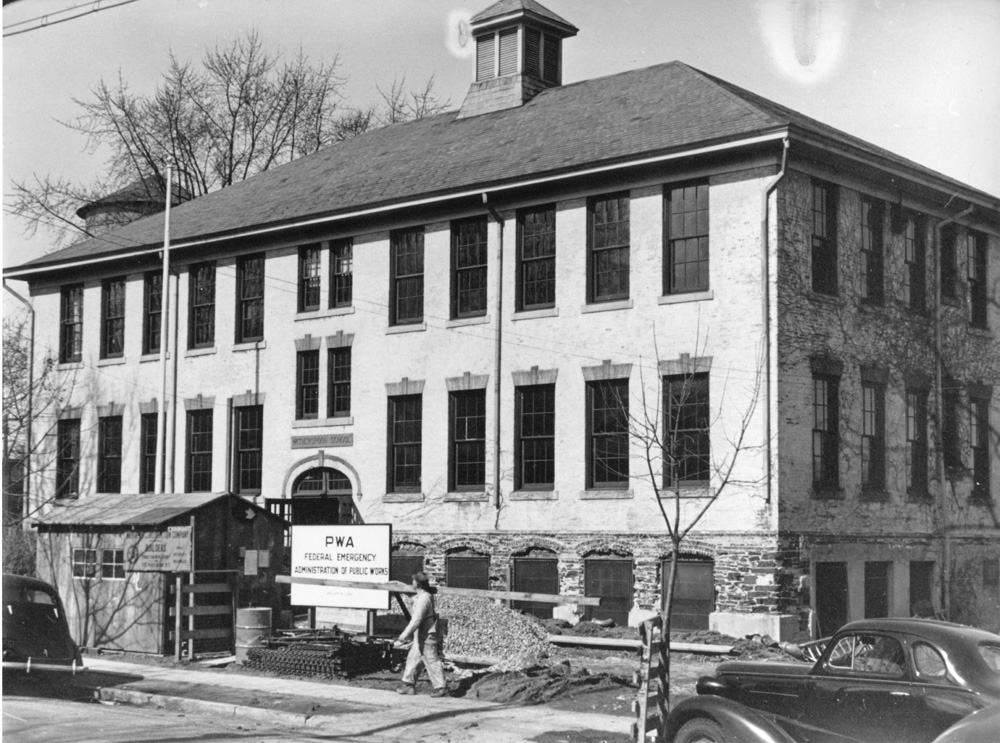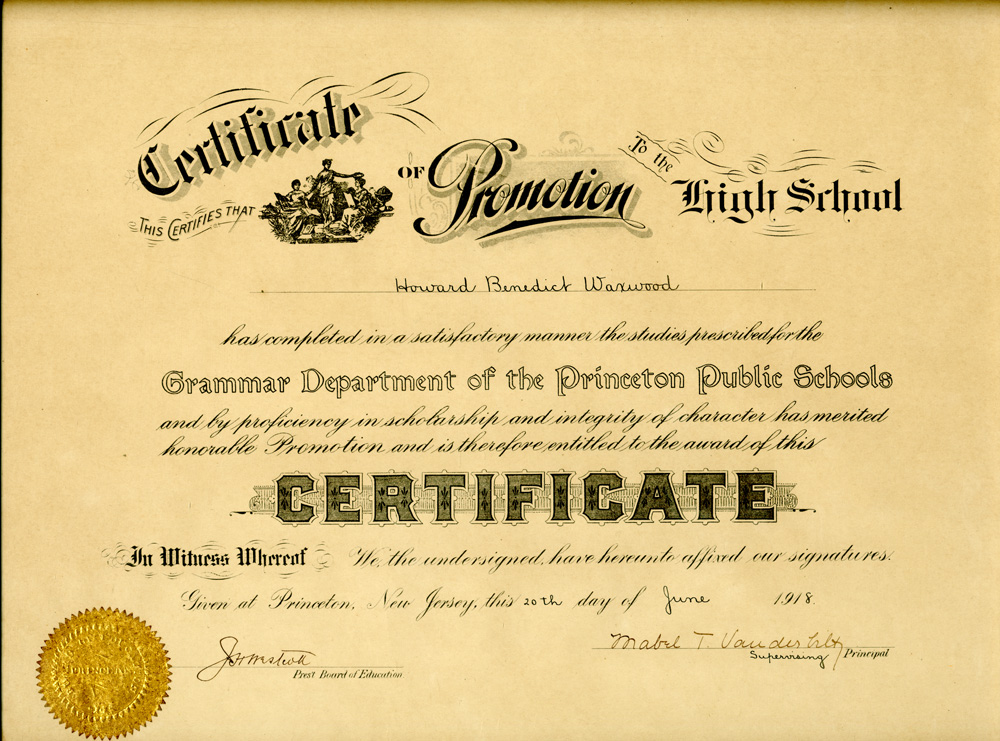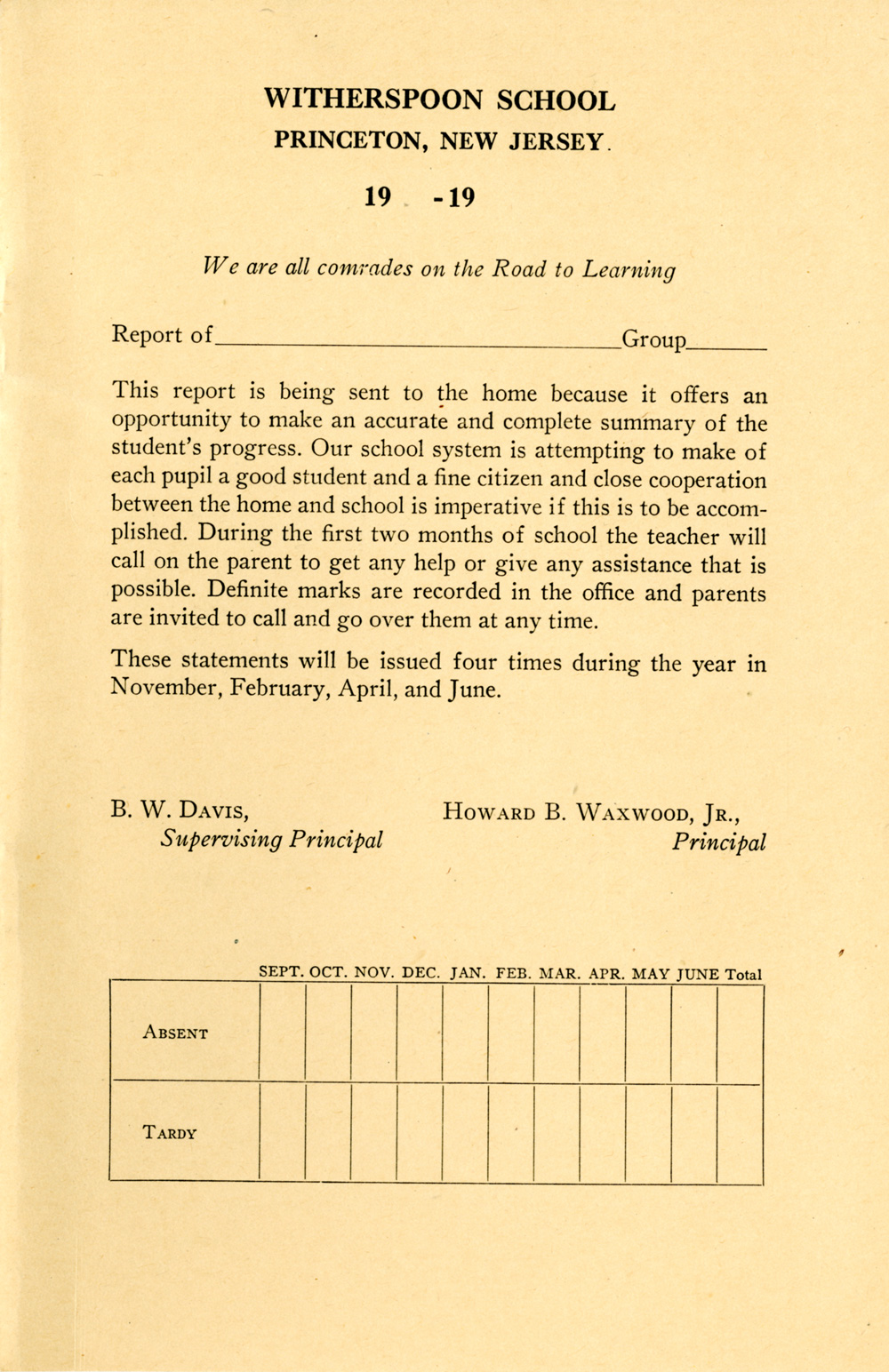Witherspoon School for Colored Children
Borough School at 35 Quarry Street
Opened 1908. Integrated 1938.
In 1908, the Witherspool School for Colored Children relocated to a new three-story building on Quarry Street, designed by Princeton University professor Walter Harris. Outbreaks of measles and diphtheria delayed the school’s opening. The dedication of the new building was postponed to June 1909, and the Board of Education hired its first visiting school nurse to manage health concerns.
With Princeton schools still segregated, the new Witherspoon School was meant to serve 200 Black students. These students came from both Princeton Borough and Princeton Township. After consolidating its schools, the Township began sending its Black students to the Witherspoon School through a special arrangement.
While students at the Witherspoon School had subpar facilities and hand-me-downs from Princeton’s white public schools, they also found themselves as part of a supportive and intimate community. Many teachers lived in the same neighborhood as the students, allowing them to act as role models for their young pupils. The school started its own newspaper, The Witherspoon Herald, and mobilized community support during World War I.
Witherspoon School under PWA renovations, 1938. Historical Society of Princeton.
For many years, the Witherspoon School was overcrowded and poorly maintained by the school district. After a campaign led by the local chapter of the National Association for the Advancement of Colored People, the building underwent a much-needed renovation in 1938, using funds from the Public Works Administration. It continued as a segregated school in Princeton for another decade.

Howard Waxwood certificate of promotion, 1918. Historical Society of Princeton.
Growing up in Princeton, principal Howard Waxwood attended the Witherspoon School for Colored Children and graduated from Princeton High School in 1922. He became principal of the Witherspoon School in 1935 and continued in this post after the public schools integrated in 1948 and the Quarry Street building became the middle school for all 6-8th graders. Today it houses an apartment complex named in Waxwood’s honor.

Witherspoon School for Colored Children report card, 1938. Historical Society of Princeton.